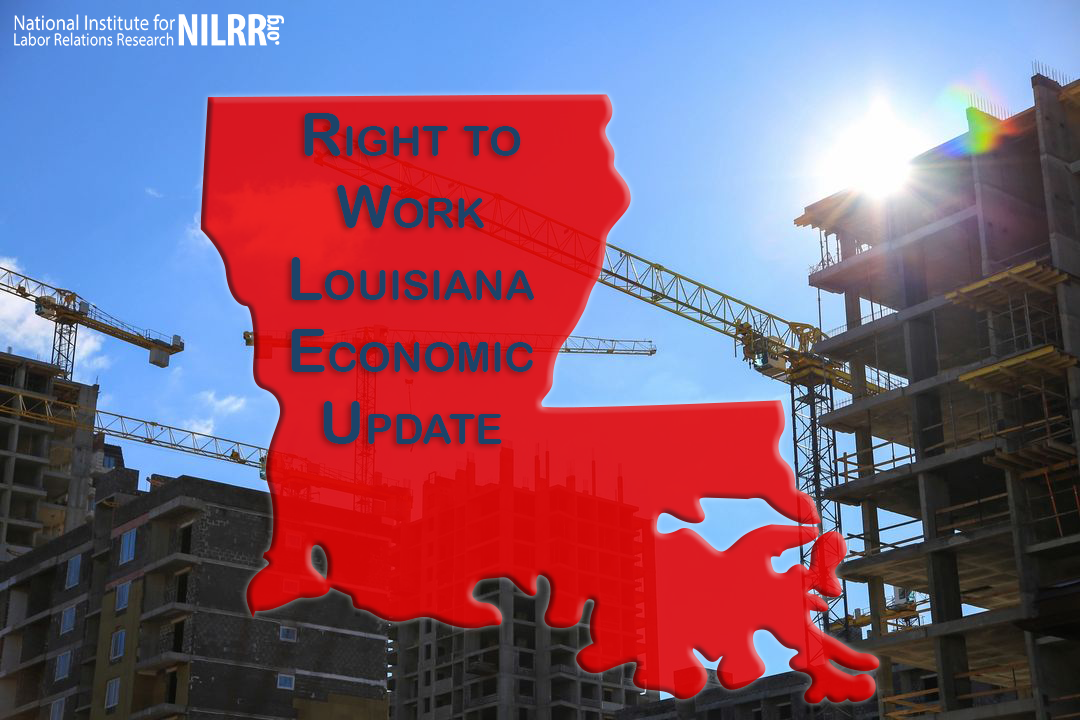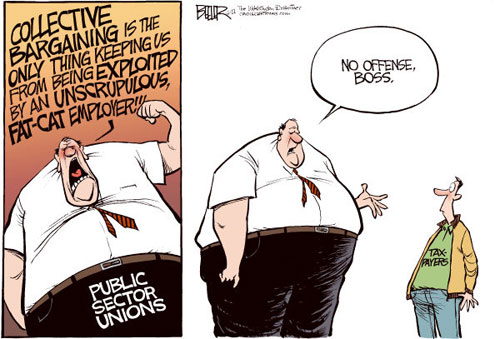Right to Work States Have Better Job Climates For Public- as Well as Private-Sector Employees

Employment, Hours, and Earnings from the Current Employment…

The fact that compulsory-unionism states burden individuals and businesses with higher taxes than do Right to Work states may come as no surprise. The fact that state and local public employment rose by 7.0% in Right to Work states from 2002 to 2012, while it actually fell in forced-unionism states, may surprise many people. Image: Nate Beeler/Washington Examiner
Late last week I pointed out here that U.S. Bureau of Labor Statistics (BLS) data reported and updated on March 18 show that private-sector payroll employment in Right to Work states grew by 6.4% from 2002 to 2012, an increase 16 times as great as the paltry increase eked out by forced-unionism states as a group.
Even some Right to Work supporters might be surprised to learn that other BLS data released on the same date show an even wider advantage for Right to Work states over forced-unionism states when it comes to payroll jobs in state and local government. From 2002 to 2012, the number of state and local government jobs in Right to Work states jumped by 7.0%, compared to a 0.6% decline in Right to Work states.
(In the above calculations, just as in the private-sector calculations published earlier, Indiana is excluded, since it switched from forced-unionism to Right to Work in early 2012. Michigan, whose December 2012-adopted Right to Work law won’t take effect until this week, is counted as a forced-unionism state.)
Right to Work states have not paid for rising state and local government payrolls by raising their tax burdens or debt levels relative to forced-unionism states. Both have been consistently lower in Right to Work than in forced-unionism states over the years.
Rather, Right to Work states have been able to afford hiring more public employees because their private-sector incomes have grown relatively healthily, as is reflected in the private-sector employment numbers. Moreover, because Right to Work states are far more attractive places to have and bring up children than forced-unionism states, they have a far greater impetus to increase their K-12 public school payroll employment — and this constitutes by far the largest single component of all state and local public employment.
As the National Institute for Labor Relations Research has previously reported, from 2000 to 2010, the number of children aged 5-17 increased by 8.7% in Right to Work states as a group, compared to an aggregate decline of 3.2% in forced-unionism states. State-by-state age-adjusted population data for 2012 are not yet available, but are expected to show a continuation if not an acceleration of the same trend once they are.
There are other likely reasons why state and local public employment fell in forced-unionism states while growing in Right to Work states over the past decade, but we will leave their consideration for another day. For the moment, suffice it to say that even public employees, who are often considered to be and sometimes can truly be insulated from market forces, are nevertheless experiencing sharply declining opportunities for advancement in forced-unionism states. In the end, the only people who consistently benefit from laws and other policies promoting the compulsory unionization of employees are union bosses themselves.

